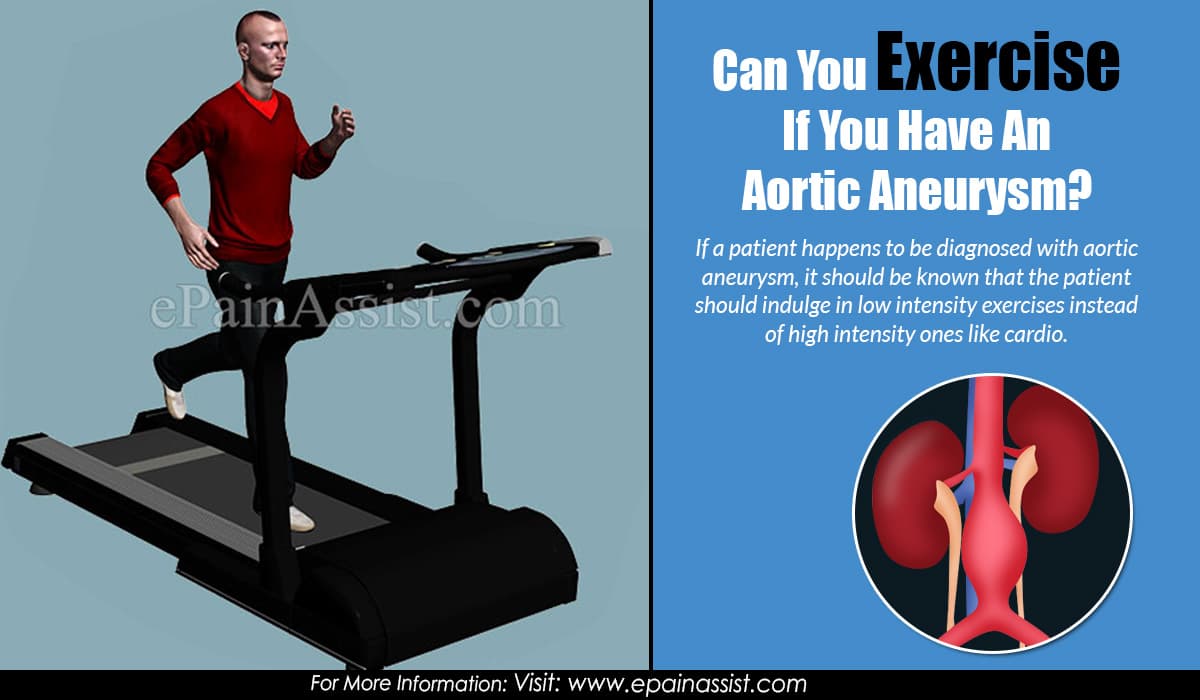Can You Exercise If You Have An Aortic Aneurysm?
If a patient happens to be diagnosed with aortic aneurysm, it should be known that the patient should indulge in low intensity exercises instead of high intensity ones like cardio. This is because high intensity exercises tend to increase the patient’s blood pressure which may further aggravate the condition of the aorta affected by aneurysm. It is important to let the doctor know about the exercise plan before starting with it.

How Important It Is For A Patient With Aortic Aneurysm To Exercise?
It is important to understand for a patient with aortic aneurysm, medical treatment along with exercise is equally important. The main idea behind exercise is staying fit and active. It is important for a patient with aortic aneurysm to stay active and fit in order to keep the blood pressure at check. Thus exercise is important even for a patient with aortic aneurysm.
Although high intensity exercises should be avoided, the patient can easily go for yoga and low intensity aerobic exercises to keep fit. Exercise also helps keep away other deadly problems like hypertension and atherosclerosis in patient with aortic aneurysm. Thus exercise can also act like stress management technique.
Exercise also helps in weight management which is important for a patient with aortic aneurysm. Obesity is harmful as it increases the risk of the rupture of aneurysm.
What Are The Types Of Exercise A Patient With Aortic Aneurysm Should Go For?
The patient with aortic aneurysm should consult the doctor before starting with the exercise plan. In general a patient with aortic aneurysm should keep the following points in mind while exercising-
Low Intensity: A patient with aortic aneurysm may go for any form of low intensity exercise that does not carry a risk of the blood pressure shooting high suddenly.
Walking: Brisk walking for 45 minutes to an hour is considered to be a good form of exercise for patients with aortic aneurysm. It keeps the body active and does not carry the risk of having high blood pressure.
Yoga: The patient can go for yoga classes or aerobic exercises which are of characteristically low intensity to keep the body fit.
Stay Away from Weight Lifting: A patient having aortic aneurysm should stay away from weight lifting because it tends to create a pressure on aorta which is dangerous. It may cause rupturing of the aneurysm.
How to Eat Healthy With Aortic Aneurysm?
It is extremely important to maintain a healthy diet along with exercise and medical treatment in aortic aneurysm.
Balanced Diet: In general, the patient should have a balanced and nutritious diet every time with right amount of all the nutrients distributed in every diet.
Small Meals: The patient should make a point to eat a small meal at regular intervals and avoid staying with empty stomach for long period of time. This is particularly important as fasting or staying hungry for long period of time can mess with the blood pressure which may be dangerous.
Fruits: It is important have a heart healthy diet including fruits and vegetables along with high fiber food.
Stay Away from Fatty Foods: A patient with aortic aneurysm should try staying away from food having high amount of cholesterol, trans fat and saturated fat. This leads to damage of blood vessels due to blockage caused by the accumulation of fats in form of plaque in the blood vessels. As a result blood circulation of the body gets affected thereby increasing the risk of aneurysm rupture.
- Mayo Clinic – Aortic Aneurysm: Exercise Recommendations: https://www.mayoclinic.org/diseases-conditions/aortic-aneurysm/expert-answers/aortic-aneurysm/faq-20058149
- Cleveland Clinic – Aortic Aneurysms: Exercise and Activity Guidelines: https://my.clevelandclinic.org/health/diseases/17794-aortic-aneurysms-exercise-and-activity-guidelines
